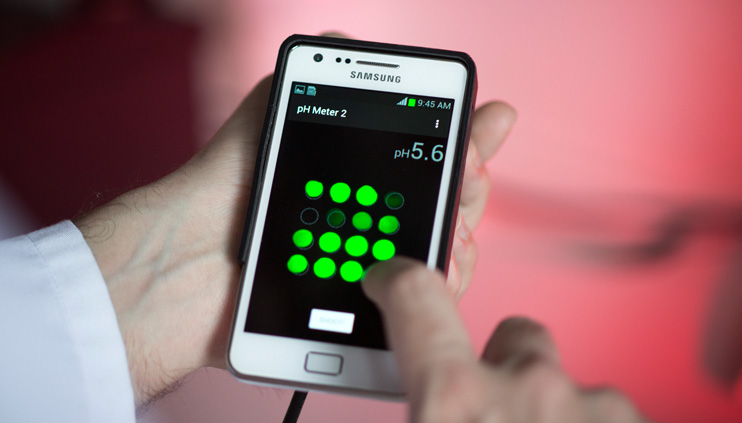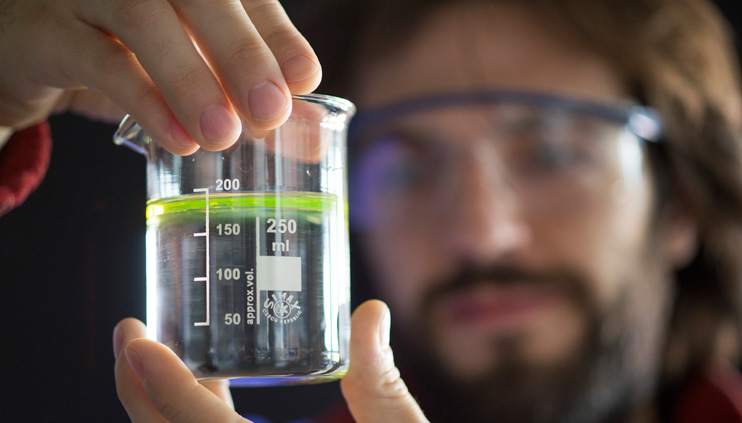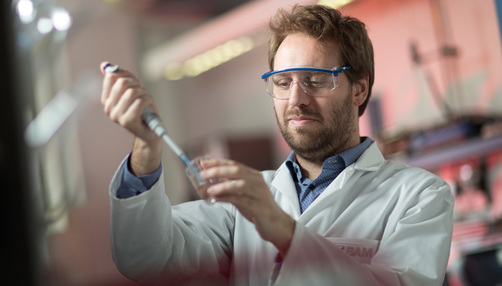
Rapid pH test on a smartphone: BAM is developing a comparable test for oil analysis.
Source: BAM/Thomas Köhler
Project period
01/04/2015 - 31/03/2018
Project type
Interdisciplinary project
Project status
Closed
Description
Oil can either be examined using intensive laboratory analyses or – with limited validity – using a rapid paper test. BAM is developing a simple rapid oil test for smartphones.
Location
Bundesanstalt für Materialforschung und -prüfung (BAM)
Richard-Willstätter-Straße 11
12489 Berlin
Diesel in water: an example of why Dr. Raúl Gotor researches better test processes. Source: BAM/Thomas Köhler
Source: BAM
Source: BAM
Source: BAM
Project results
Paper "Semi-automatic Gas Measurement Device Based on Fluorescent Multi-gas Sensors"
Paper "Fluorescent Paper Strips for the Detection of Diesel Adulteration with Smartphone Read-out"
Paper "Wireless Mobile Sensor Device for in-situ Measurements with Multiple Fluorescent Sensors"
Paper "Detection of Adulterated Diesel Using Fluorescent Test Strips and Smartphone Readout"
Leaks in pipelines or traces of oil in drinking water caused by fracking – oil extraction frequently leads to pollution that could harm people and nature. In some regions, petrol and diesel are moreover diluted to the detriment of the consumer. And micro-organisms can survive in large fuel tanks at airports or garages, polluting the fuel with particles and presenting a safety risk.
A quick and simple oil test would be helpful for these situations. Admittedly, there are already commercial rapid paper tests available to determine if there is oil in water, for example; but their validity is limited. A comprehensive examination of origin, composition or cleanliness is a lot more expensive and, until now, required professional laboratory equipment.
Dr. Jérémy Bell is working on a rapid test for oil analysis. Source: BAM/Thomas Köhler

BAM's expertise
BAM has recognised this need and, as a result, started a project to address this gap in the market. BAM researchers are working together across disciplines, bringing to the project their experience in the areas of optical sensor materials, analysis of oil traces and microbes, electronic sensors and software programming.
BAM's performance and process
The maximum objective is the development of a rapid test for smartphones that is simple to operate but of high analytical value, which can be used to test organic material for oil components. The minimum objective is the development of a rapid test that can be controlled via a smartphone, but which also requires a hand-held analysis device. The project has three focus areas:
1. Oil identification and testing processes using chemical and optical sensors/microfluid chips
Initially, various rapid oil tests will be developed by BAM to cover the desired test cases.
- Further development of analysis methods for oil identification, with a focus on fluorescence tests
- Research into new chemical tests, such as functional colouring or molecular probes
- Further development of the qPCR method (quick Polymerase Chain Reaction) invented at BAM for identifying and counting microbes in petrol.
- BAM has already developed a chip that is compatible with many chemical tests, enables a fluorescence test and is relatively cheap.
- And BAM already has available two microfluid systems of its own development, processes that are able to analyse even the smallest quantities of liquids: one is used to detect mercury, the other is used to identify sugar in soft drinks. Insights from both will also be used for the oil test.
2. Integrating sensors and developing a test device
In order for the results to be assessed on a hand-held device such as a smartphone, sensors and measurement systems must be integrated and a test device/test software must be developed.
3. Validation and implementation
At the conclusion of the project BAM will answer questions about quality testing, certification and the test's performance capability.


